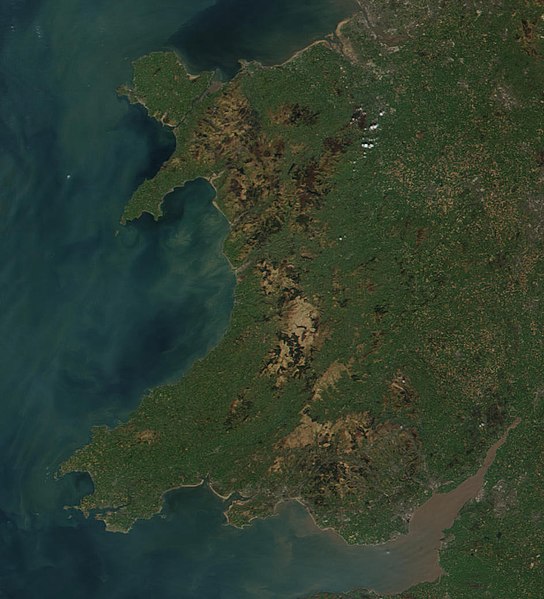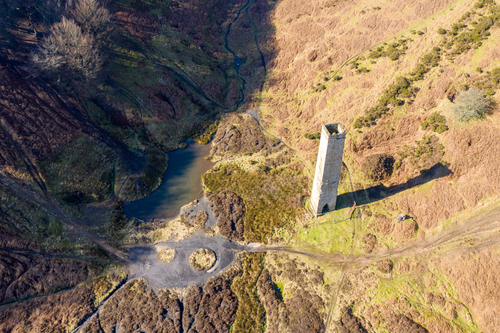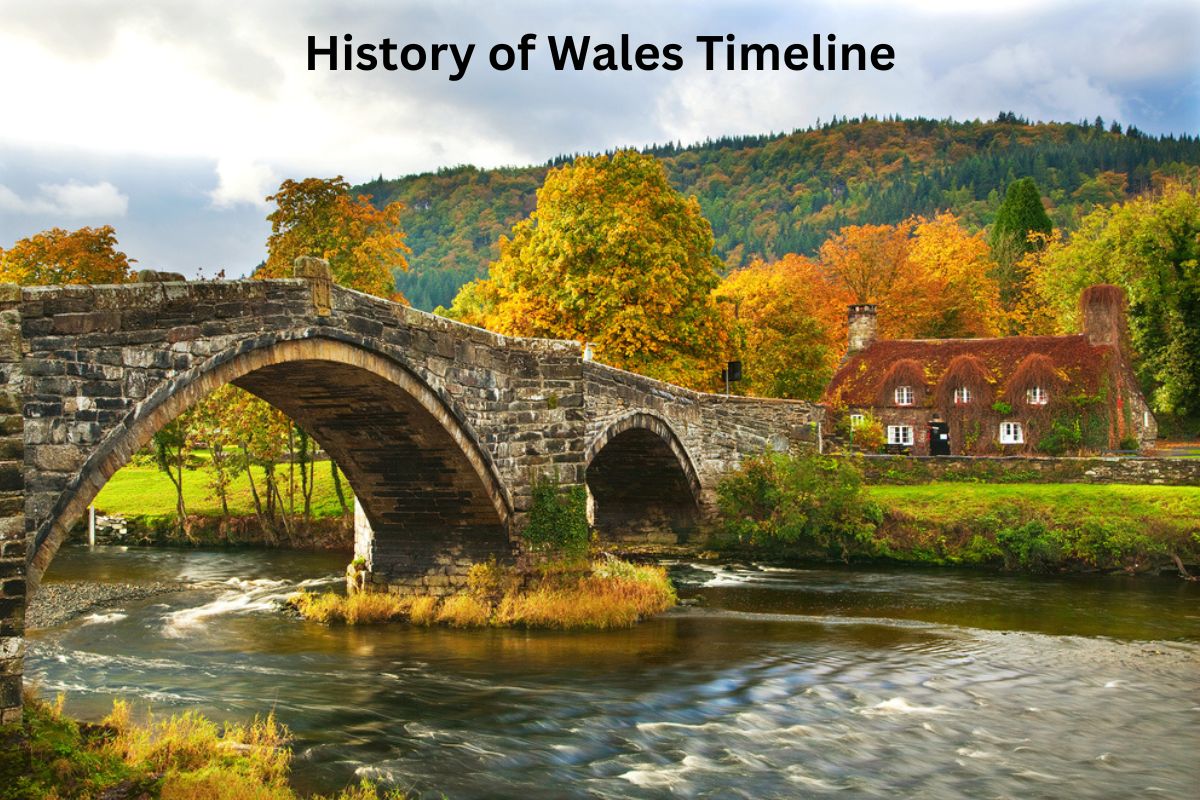The history of Wales is a tapestry woven with threads of ancient Celtic heritage, Roman conquest, medieval kingdoms, industrial transformation, and modern political evolution. Nestled in the western part of the island of Great Britain, Wales has a rich and diverse history that spans thousands of years.
Wales boasts a landscape marked by rugged mountains, rolling hills, verdant valleys, and a stunning coastline, providing a backdrop to a narrative that is as breathtaking as it is complex.
The story of Wales encompasses the rise and fall of kingdoms, the struggles for independence, the influence of religion and culture, and the resilience of its people.
In this exploration of Welsh history, we will delve into the key epochs and pivotal events that have shaped this nation.
From the prehistoric roots of its earliest inhabitants to the modern-day dynamic of devolution, the history of Wales is a captivating journey through time and a testament to the enduring spirit of a distinctive and proud people.
| Time Period | Key Events and Developments |
|---|---|
| Prehistoric Wales | – 230,000-120,000 BCE: Human occupation in Paleolithic Wales. |
| – 2300-800 BCE: Bronze Age with burial mounds and bronze tools. | |
| Roman Period | – 43 CE: Roman conquest begins. |
| – 78-79 CE: Construction of Roman fort at Caerleon (Isca Augusta). | |
| – 1st-4th centuries CE: Romanization of Wales, towns, and infrastructure. | |
| Early Medieval Wales | – 5th-7th centuries: Celtic kingdoms and Christianity. |
| – 8th-10th centuries: Viking raids disrupt Welsh society. | |
| 11th-13th centuries | – 1066: Norman conquest of England influences Wales. |
| – 1093-1094: Norman incursions and conquest of Welsh principalities. | |
| – Late 12th century: Reign of Llywelyn the Great. | |
| – 1282-1283: Edward I completes conquest of Wales. | |
| Late Medieval and Early Modern | – Late 15th century: Emergence of the Tudor dynasty. |
| – 1536-1543: Laws in Wales Acts (Act of Union). | |
| – 1642-1651: Involvement in the English Civil War. | |
| Industrial Revolution | – Late 18th century: Center of industrialization, coal mining, iron production. |
| – 19th century: Urbanization, growth of towns and cities. | |
| Modern Period | – 1967: Flooding of Tryweryn Valley leads to protests. |
| – 1997: Devolution with the establishment of the National Assembly for Wales. | |
| – 1999: First elections to the National Assembly. | |
| – 2006: Increased legislative powers for the Welsh government. | |
| – 2011: Referendum approves further devolution. | |
| – 2020: Welsh Senedd (Parliament) becomes the official term. | |
| Present | – Wales has its own government, part of the United Kingdom. |
Welsh History Timeline
Prehistoric Wales:
Prehistoric Wales covers a vast expanse of time, beginning with the Paleolithic period, which spanned from approximately 230,000 to 120,000 BCE. During this era, early humans inhabited the region, leaving behind evidence of their presence in the form of stone tools and artifacts.
These early inhabitants were primarily hunter-gatherers, relying on the resources of the land for their survival.
Also Read: History of Scotland Timeline
As time progressed, the Bronze Age arrived in Wales, lasting from around 2300 to 800 BCE. This period marked a significant advancement in technology, as people began to work with bronze, an alloy of copper and tin.
Bronze tools, weapons, and decorative items became prevalent, reflecting a more complex and organized society. Notable among the archaeological remains from this period are the burial mounds that dot the Welsh landscape, suggesting the existence of structured burial practices and social hierarchies.

Roman Period:
The Roman conquest of Wales commenced in 43 CE under Emperor Claudius as part of the broader Roman campaign to conquer Britain. Roman legions established control over Wales, constructing a network of roads, fortifications, and towns.
Among these developments was the construction of the Roman fort at Caerleon, known as Isca Augusta, which played a pivotal role as a military and administrative center in the region.
Also Read: Timeline of the History of Britain
Romanization gradually took hold in Wales over the centuries of Roman rule. Towns and cities flourished, and Roman culture, architecture, and governance became increasingly influential.
This period also witnessed the spread of Christianity, with the establishment of early Christian communities and the introduction of the Christian faith to the Welsh population.
Early Medieval Wales:
The early medieval period in Wales saw the emergence of Celtic kingdoms and the consolidation of Christianity. After the Roman withdrawal from Britain in the early 5th century, Wales experienced a period of political fragmentation.
Various Celtic kingdoms, including Gwynedd, Powys, and Dyfed, began to establish their domains. These kingdoms were often characterized by tribal loyalties and regional rulers.
Christianity made significant inroads during this era, with the establishment of monastic communities and the gradual conversion of the Welsh people to Christianity. Monasteries like St. David’s in Dyfed played a central role in both religious and educational pursuits.
This period laid the foundation for the later development of Wales as a Christian nation with its own unique cultural identity.
In addition to the growth of Christianity and the emergence of regional kingdoms, the early medieval period also witnessed Viking raids and invasions that disrupted Welsh society.
Viking longships sailed along the Welsh coast, leading to conflicts and the need for stronger regional rulers and defensive structures, such as hillforts, to protect against external threats.
These historical epochs collectively contributed to the formation of Wales as a distinct entity with a rich and diverse heritage. The transitions from prehistory through Romanization to early medieval kingdoms marked important chapters in the story of this land and its people.

Industrial Revolution:
The late 18th century marked a transformative period for Wales as it became a central hub of the Industrial Revolution. This era saw a dramatic shift from agrarian and rural societies to industrialized urban centers.
The key catalyst for this transformation was the discovery of valuable coal and iron deposits in Wales.
Coal mining, in particular, became a major industry, with South Wales becoming famous for its coal production. The exploitation of these resources fueled the growth of towns and cities, as well as the construction of railways and canals to transport goods to the growing industrial centers.
Ironworks and steel mills also proliferated, contributing to the expansion of heavy industry in the region.
The population of Wales surged as people flocked to work in the mines and factories. This period of rapid industrialization had profound social and economic consequences, as the traditional way of life in rural Wales gave way to a more urban and industrial society.
Modern Period:
The 20th century brought significant political changes and cultural developments to Wales. One of the notable events was the flooding of the Tryweryn Valley in 1967 to create a reservoir for Liverpool, England. This move caused widespread protests and heightened Welsh nationalism, as it was seen as an infringement on Welsh lands for the benefit of an English city.
In 1997, the United Kingdom underwent a process of devolution, leading to the establishment of the National Assembly for Wales. This was a pivotal moment in Welsh history, as it marked the return of significant political decision-making powers to Wales. The first elections to the National Assembly were held in 1999, allowing Wales to have more control over areas like education, health, and transportation.
In 2006, the National Assembly was granted increased legislative powers, further strengthening its role in governing Wales. This trend continued in 2011 when a referendum approved even more devolution, granting the National Assembly the power to make laws in devolved areas without requiring approval from the UK Parliament.
In 2020, the Welsh legislature officially adopted the term “Senedd” (Parliament) as the official name for the Welsh Parliament, reflecting Wales’s status as a distinct nation within the United Kingdom. The Senedd continues to play a vital role in shaping Welsh policies and laws while working in conjunction with the UK Parliament in Westminster.
Today, Wales retains its own government and parliament, responsible for a wide range of domestic affairs, while remaining a part of the United Kingdom. These developments have allowed Wales to assert its identity and have a greater say in its governance within the UK framework.
